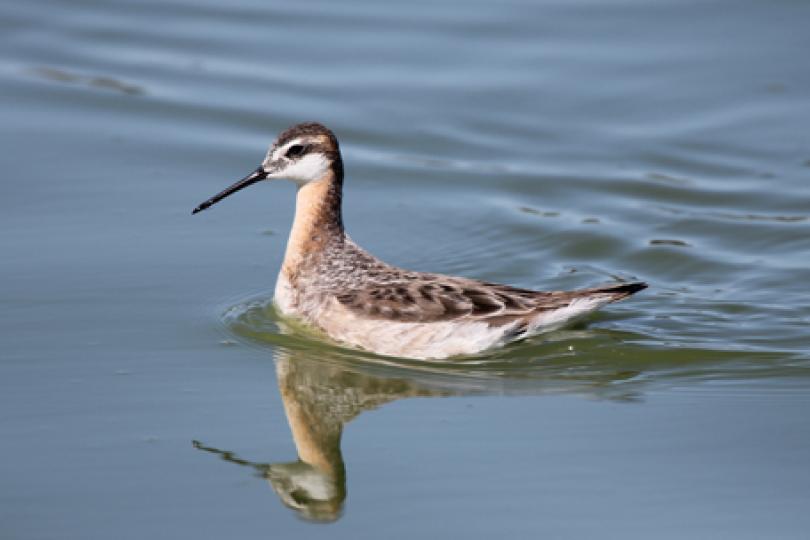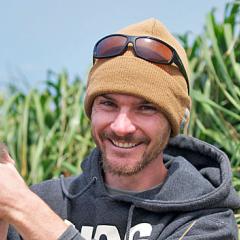Working group established for conservation of phalaropes
Phalaropes are tiny shorebirds that cover tens of thousands of miles in their migrations between North and South America. They especially depend on large salt lakes in Western North America and in the South American Andes, where they eat brine flies and shrimp at these special, globally threatened habitats. Ryan Carle and Margaret Rubega came together to plan and host a working group meeting on phalaropes at Mono Lake, California, during June 2019. The impetus for the meeting was that, despite being well-known species among birders, the scientific knowledge of phalaropes' population numbers, trends, and migratory routes is severely lacking — scientists don't know if these impressive migrators are in trouble or not. However, salt lakes such as Mono Lake, are threatened globally by water diversion and climate change, so there is ample reason to worry for the phalaropes. Carle and Rubega collaborated on this meeting, bringing together Ryan's personal history, being born and raised at Mono Lake, and Margaret's experience studying phalaropes for many decades. Input from the Switzer Network was invaluable at offering advice on hosting such workshops, as well as thoughts for how to successfully create a sustainable working group.
The phalarope working group meeting brought together 30 people from 15 different agencies and nonprofits and from five countries (Argentina, Chile, Paraguay, Peru, and the U.S.) to discuss what is known about phalarope biology and threats, and steps forward for conservation. The major need identified by the working group was to fill in major gaps in data — basic questions such as how many birds, whether numbers are declining, and where they go. Since the meeting, which resulted in great momentum on the issue, much progress has already been made. During summer 2019, Carle and Rubega conducted the first phalarope surveys in 30 years at Mono Lake and coordinated these surveys at other major salt lakes in the Western U.S., and in February 2020, surveys will be conducted in the South American Andes. Plans are underway to track the birds, which will likely happen in 2020 at Mono Lake.
According to Carle and Rubega, by far the most rewarding, and likely the most important, outcome of the meeting was connecting people from around the hemisphere to share their expertise and passion for the diminutive phalarope. The International Phalarope Working Group has now been formalized with plans to continue coming together and collaborating on the conservation of these unique birds and the saline lake habitats they, and many humans, depend on.
Carle and Rubega invite continuing input from the Switzer Network on organizing and funding working groups, as well as the sharing of expertise on migratory bird conservation and research, and salt lake conservation.


